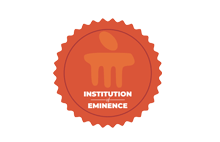Prevalence and Radiological Features of Fabella in a Saudi Arabian Population
Document Type
Article
Publication Title
Muscles, Ligaments and Tendons Journal
Abstract
Background. The fabella, a sesamoid bone in the posterolateral aspect of the knee, induces clinical conditions. Considering its ethnic variations and surgical importance, we measured the dimensions and recorded the prevalence of fabella in a Saudi population. This study aims to compare the features of fabella in Saudis with other populations and to test whether its incidence is associated with gender, side, laterality, and age. Methods. In this retrospective cross-sectional study, we reviewed knee radiographs and magnetic resonance imaging films of 820 patients aged 20-90 years. Descriptive statistics were performed to estimate the prevalence of fabella. The chi-square test was used to evaluate the associations of sex, age, and laterality with the prevalence of fabella. The size of the fabella was measured and compared between the sexes and with other studies using independent t-tests. The level of significance was set at p < 0.05. Results. The overall prevalence of bony fabellae was 20.73 %, but no cartilaginous fabella was identified. Its prevalence was significantly associated with age (p = 0.009), right side (p = 0.003) and laterality (p = 0.002). The mean length, thickness, and width were 6.4 mm, 6.07 mm, and 4.74 mm, respectively. The size was significantly larger in males than in females (p < 0.001). The size of the fabella in Saudis is significantly larger than in Turks and smaller than in Asians (p < 0.001). Conclusions. The anatomical features and prevalence of fabella in Saudis vary from those of other ethnic populations. It is clinically crucial to comprehend its variations and features for health professionals, aiding in the differential diagnosis of pathological loose bodies and preventing complications during knee arthroplasty.
First Page
292
Last Page
299
DOI
10.32098/mltj.02.2024.08
Publication Date
4-1-2024
Recommended Citation
Packirisamy, Vasanthakumar; Aljarrah, Khaled; Tasslaq, Sameer E.; and Saikarthik, Jayakumar, "Prevalence and Radiological Features of Fabella in a Saudi Arabian Population" (2024). Open Access archive. 10449.
https://impressions.manipal.edu/open-access-archive/10449


